Affiliate links on Android Authority may earn us a commission. Learn more.
OnePlus 6 vs Apple iPhone X: can David take on Goliath?
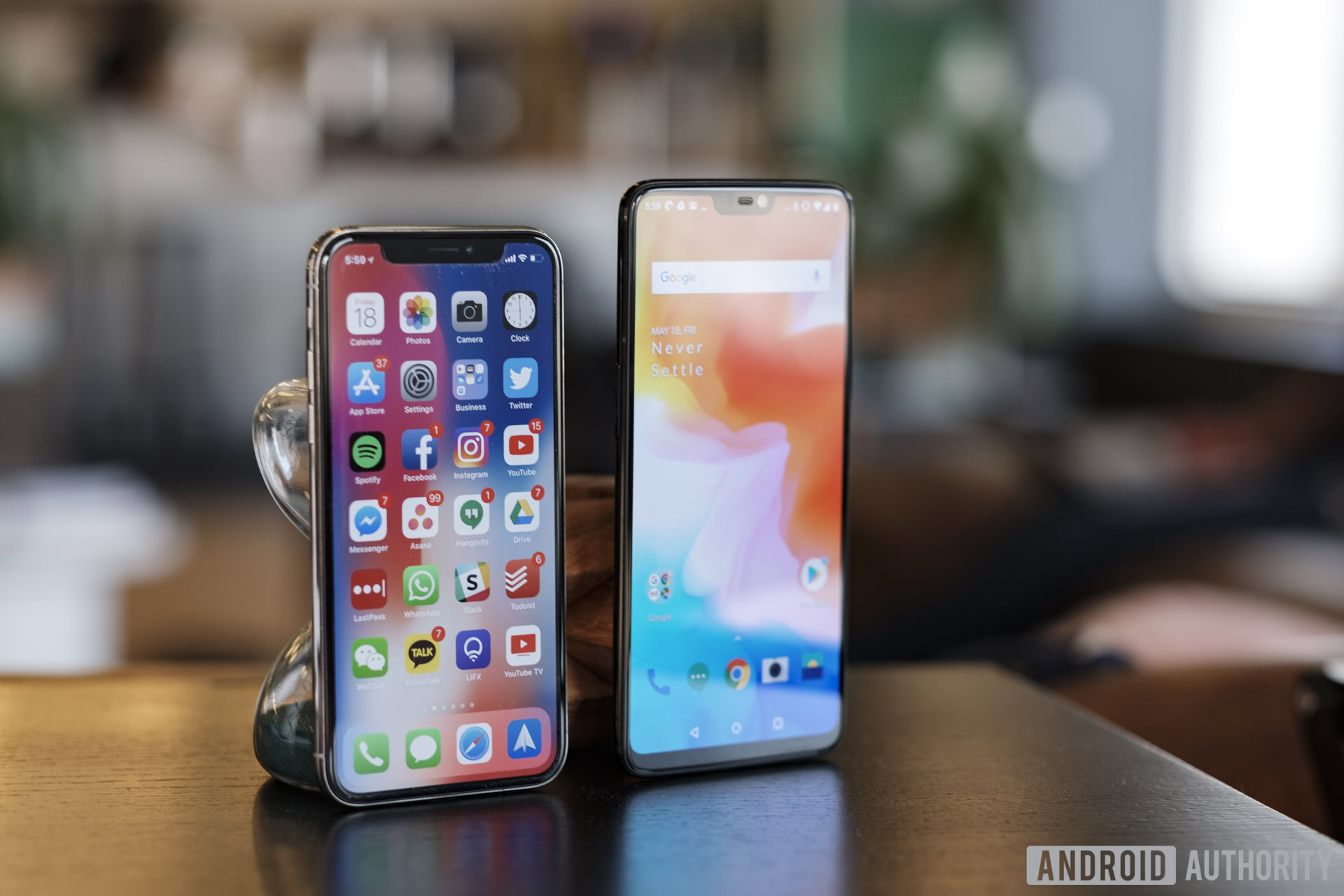
The OnePlus 6 is proof you don’t have to pay a fortune for a premium smartphone experience. If you’re an Android user on a budget, few phones compare.
The comparison gets a bit trickier when you look outside of the Android world. Does the sub-$550 OnePlus 6 have what it takes to go up against the $999 iPhone X? Let’s find out! This is our OnePlus 6 vs Apple iPhone X.
Avoiding the bias
Let’s get this out of the way — I’m not an Apple fan. I’ve owned a few Apple products in the past, the most recent being an iPad 2. I have used the iPhone 6s and iPhone 7 for work purposes, but I generally prefer Android. That’s probably why I work for Android Authority.
Most of you reading might be equally biased. To keep things fair, this review will focus on design, display, performance, camera, and other hardware. We’re going to leave software out of it.
If you like iOS, the Apple iPhone X is the obvious choice. If you like Android, OnePlus has a wonderful near-stock Android experience.
Apple has the fastest software updates, but OnePlus is one of the best outside of the Pixel. In fact, it already has access to the Android P Beta.
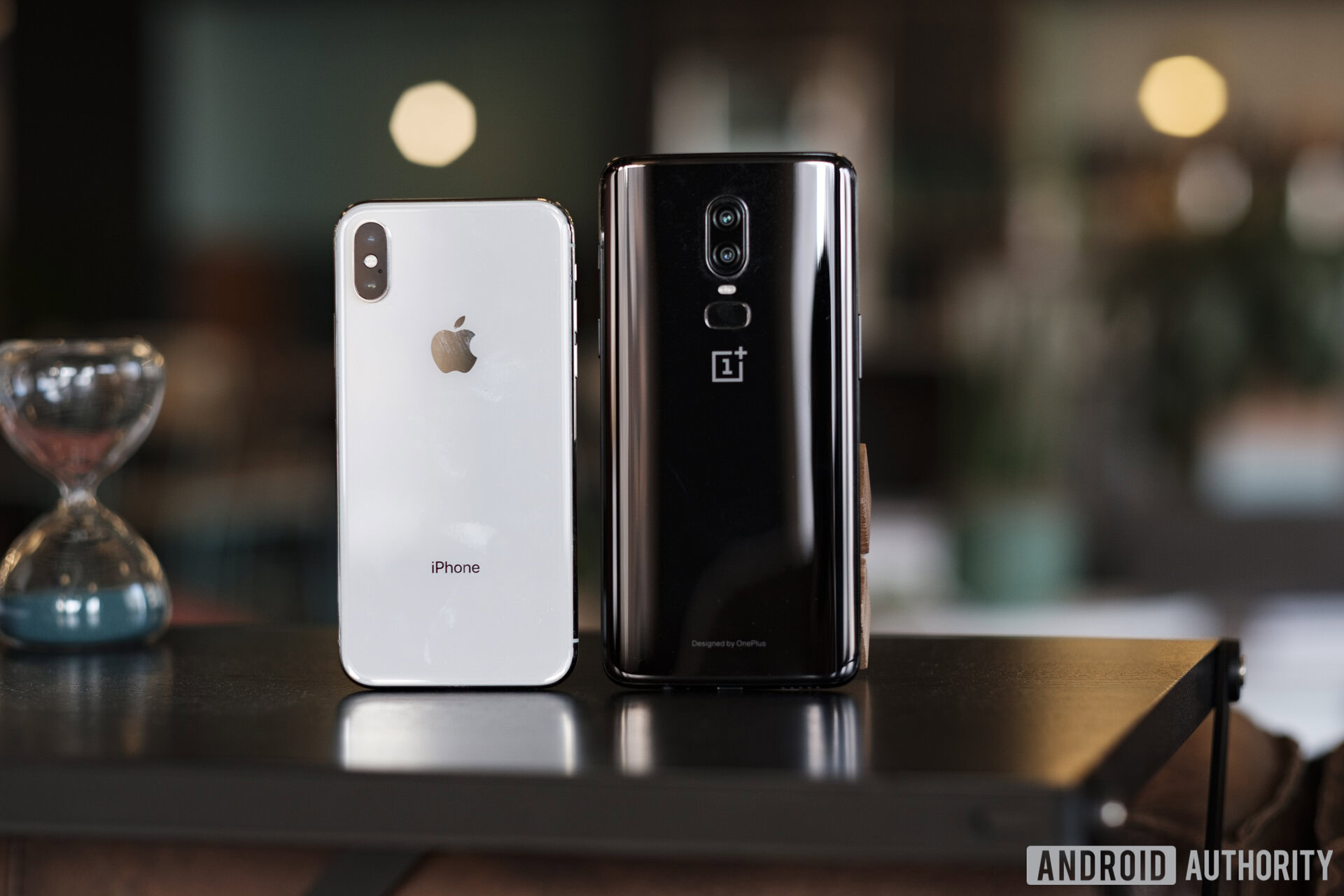
Look and feel
The OnePlus 6 and iPhone X are glass handsets with nearly bezel-less displays. They also both rock the divisive notch, though Apple’s notch is slightly bigger to accommodate the advanced sensors used for its face unlocking tech.
They might look similar, but they don’t feel alike at all.
The OnePlus 6 is 12.1mm taller (at 155.7m) and 4.5mm wider (at 75.4mm) than the iPhone X. Despite only 3 grams difference, the OnePlus 6 also feels substantially heavier. This larger design makes the OnePlus 6 feel very durable, though a bit harder to handle. The difference in size also allows it to pack a massive 6.28-inch, versus the 5.8-inch display offered with the iPhone.
The iPhone X really feels like a $1000 phone. That’s not to say the OnePlus 6 doesn’t look and feel great.
After using the iPhone X for about a week, I can honestly say I find holding it feels a bit better. It’s light and nimble, and the aesthetic is arguably more polished. I also have to give Apple credit for its take on the notch. While I don’t like notches, at least Apple’s display manages to remove the chin from the equation. It truly feels bezel-less, as there’s very little Apple could have done to make the phone smaller while retaining a big display.
The iPhone X really feels like a $1000 phone. That’s not to say the OnePlus 6 doesn’t look and feel great. For the money, OnePlus did a great job. The iPhone X just manages to slightly beat it out when it comes to look and feel.
Of course, there are other design aspects like waterproofing, headphone jacks, and fingerprint scanners to consider. We’ll be sure to talk about those a bit further into this comparison.
Winner: iPhone X
- Chinless design.
- Great handling.
- Feels a bit more premium.
Read Next: How to solve the biggest OnePlus 6 problems including screen issues | OnePlus Bullets wireless headphones
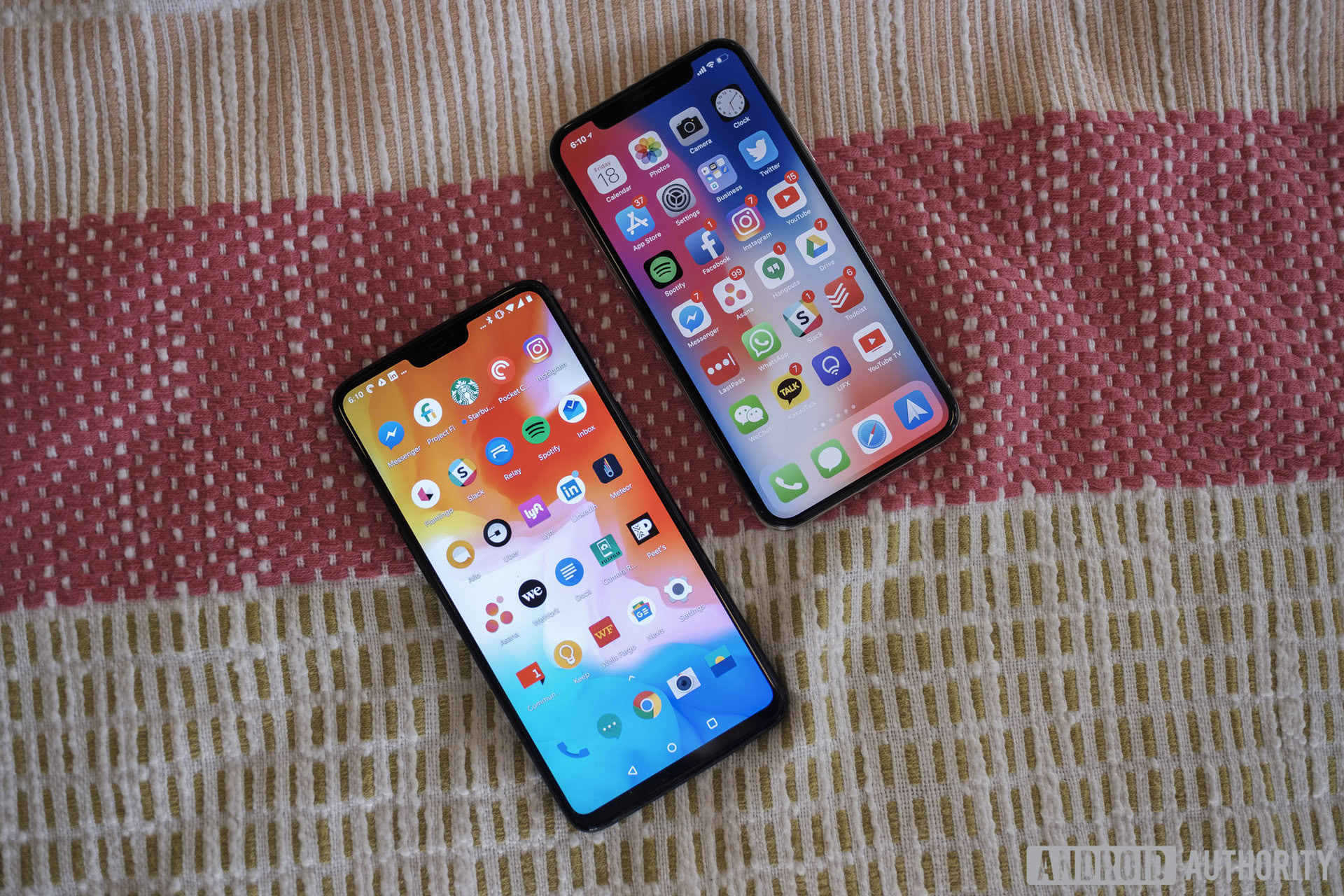
Display
The most obvious difference between their displays is size, with the iPhone X at 5.8 inches versus the OnePlus 6’s 6.28-inch display.
Both phones offer OLED panels, though the iPhone X has a higher resolution at 2,436 x 1,125 (versus 2,280 x 1,080). Both displays look great with vibrant colors, excellent viewing angles, and the dark blacks you’d expect from an OLED. They both max out at 574 nits, giving you plenty of brightness for outdoor use.
Despite packing a lower resolution, the OnePlus 6 actually has a few advantages. Not only does it display a wider spectrum of colors, but it also has slightly better color accuracy. Furthermore, OnePlus’ software has different display modes and profiles to adjust the screen to your own preferences.
Winner: OnePlus 6
- Slightly lower resolution, but better color accuracy.
- Better display customization.

Performance
Apple’s ecosystem is very different from what you’ll find in the Android world, and this becomes pretty apparent when looking at the specs. It also makes a direct comparison near impossible.
The OnePlus 6 features the best specs you’ll find in the Android world, with a Snapdragon 845 and up to 8GB of RAM on board. There’s also storage options that start at 64GB and top out at 256GB.
Apple’s iPhone X runs their in-house A11 Bionic chipset with 3GB of RAM. It has 64GB and 256GB storage variants.
| OnePlus 6 | iPhone X | |
|---|---|---|
Display | OnePlus 6 6.28-inch AMOLED 2,280 x 1,080 resolution 19:9 aspect ratio Corning Gorilla Glass 5 Supports sRGB, DCI-P3 | iPhone X 5.8-inch OLED Super Retina display 2,436 x 1,125 resolution 19.5:9 aspect ratio Scratch-resistant glass, oleophobic coating Dolby Vision/HDR10 compliant |
SoC | OnePlus 6 Qualcomm Snapdragon 845 Octa-core, 10nm, up to 2.8GHz | iPhone X Apple A11 Bionic Hexa-core 2.39 GHz |
GPU | OnePlus 6 Adreno 630 | iPhone X Apple GPU three cores |
RAM | OnePlus 6 6GB/8GB | iPhone X 3GB |
Storage | OnePlus 6 64/128/256GB UFS 2.1 2-lane Non-expandable | iPhone X 64GB/256GB Non-expandable |
Cameras | OnePlus 6 Rear Main camera: 16MP, f/1.7 aperture, 1.22μm pixels Secondary camera: 20MP, f/1.7 aperture, 1.0μm pixels Front 16MP, f/2.0 aperture, 1.0μm pixels | iPhone X Rear Main Camera: 12 MP f/1.8 wide-angle aperture Secondary camera: 12 MP f/2.4 telephoto aperture with OIS and 2x zoom Front 7MP f/2.2 aperture Face detection, HDR |
Audio | OnePlus 6 Bottom-firing speaker Dirac HD Sound Dirac Power Sound 3.5mm headphone jack | iPhone X Bottom-firing stereo speakers No 3.5mm headphone jack |
Battery | OnePlus 6 3,300mAh Non-removable Dash Charge (5V 4A) | iPhone X 2716 mAh Non-removable |
IP Rating | OnePlus 6 No | iPhone X IP67 certified dust/water resistant (up to 1m for 30 mins) |
Sensors | OnePlus 6 Fingerprint Hall Accelerometer Gyroscope Proximity Ambient light Electronic compass Sensor hub | iPhone X Face ID Accelerometer Gyro Proximity Compass Barometer |
Ports | OnePlus 6 USB Type-C (USB 2.0) USB audio support 3.5mm headphone jack | iPhone X USB 2.0 Proprietary reversible connector |
Network | OnePlus 6 LTE: Supports 4xCA Supports 64QAM, 256QAM, up to DL CAT 16 (1Gbps)/UL CAT 13 (150Mbps) depending on carrier support Bands: FDD LTE: Bands 1/2/3/4/5/7/8/12/17/18/19/20/25/26/28/29/30/32/66/71 TDD-LTE: Bands 34/38/39/40/41 TD-SCDMA: Bands 34/39 UMTS (WCDMA): Bands 1/2/4/5/8/9/19 CDMA: BC0/BC1 GSM: 850/900/1800/1900MHz | iPhone X FDD-LTE: Bands 1, 2, 3, 4, 5, 7, 8, 12, 13, 17, 18, 19, 20, 25, 26, 28, 29, 30, 66 TD-LTE: Bands 34, 38, 39, 40, 41 TD-SCDMA 1900 (F), 2000 (A) CDMA EV-DO Rev. A (800, 1900, 2100 MHz) UMTS/HSPA+/DC-HSDPA (850, 900, 1700/2100, 1900, 2100 MHz) GSM/EDGE (850, 900, 1800, 1900 MHz) |
Connectivity | OnePlus 6 Wi-Fi: 2x2 MIMO, 802.11 a/b/g/n/ac, 2.4G/5G Bluetooth 5.0 aptX/aptX HD support NFC GPS, GLONASS, BeiDou, Galileo | iPhone X Wi-Fi 802.11 a/b/g/n/ac, dual-band, hotspot Bluetooth 5.0 NFC GPS, AGPS, GLONASS |
Software | OnePlus 6 Android 8.1 Oreo OxygenOS | iPhone X iOS 11.1.1 Upgradable to iOS 11.3 |
Dimensions and weight | OnePlus 6 155.7 x 75.4 x 7.75mm 177g | iPhone X 143.6 x 70.9 x 7.7 mm 174 g |
Colors | OnePlus 6 Mirror Black, Midnight Black, Silk White | iPhone X Space Gray Silver |
SIM | OnePlus 6 Dual nano SIM | iPhone X Nano SIM |
On paper, the OnePlus 6 sounds more impressive, especially when it comes to RAM. Remember iOS and Android are very different operating systems. Apple only has to optimize for a few phones, while Android has to work with hundreds. This means iOS typically has much lower system requirements.
Both phones can handle anything you throw at them.
When it comes to daily use, both phones handled all my favorite apps and games without skipping a beat. I actually felt the iPhone X sometimes took a little longer to actually load up apps, though that’s hard to accurately measure.
Real world use is very similar here, though the iPhone X actually scored a bit better in GeekBench 4 with a score of 10,100 (versus the OnePlus 6 with 8,967).
Winner: Tie
- More RAM might make the OnePlus 6 slightly better at multitasking. Slightly.
- According to benchmarks, the iPhone X’s A11 Bionic is more powerful, but again not to the point many will notice.
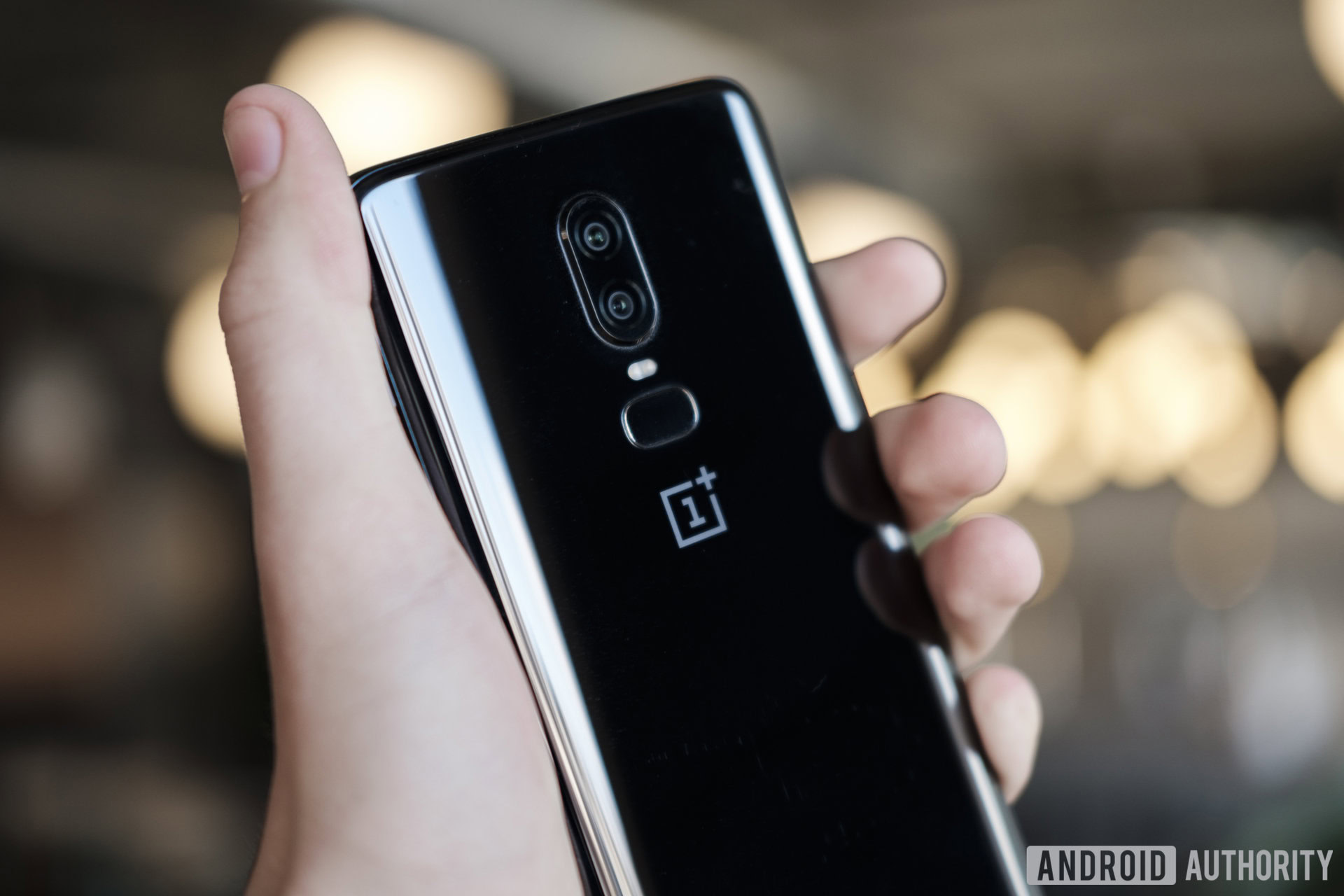
Battery life
The iPhone X has a relatively small 2,716mAh battery, versus the OnePlus 6’s 3,300mAh battery. However, there’s more to battery life than the size, and optimization plays a big role.
Both phones have similar battery life, easily achieving between five and six hours of screen-on time. However, the OnePlus 6 has the edge in charging back up.
The OnePlus 6’s Dash Charge technology can take a battery from empty to 60 percent charged in just 30 minutes. The iPhone X doesn’t include a fast charging adapter, so it takes literally hours to top off.
The iPhone X supports fast charging, it just doesn’t include a charger that can do it. Fast charging on the iPhone X reportedly charges from empty to 50 percent in about 30 minutes. It also offers wireless charging, unlike the OnePlus 6, but you’ll need to buy a separate wireless charging pad.
Winner: OnePlus 6
- Everything for fast charging is included in box.
- Dash charging remains ultra-quick.
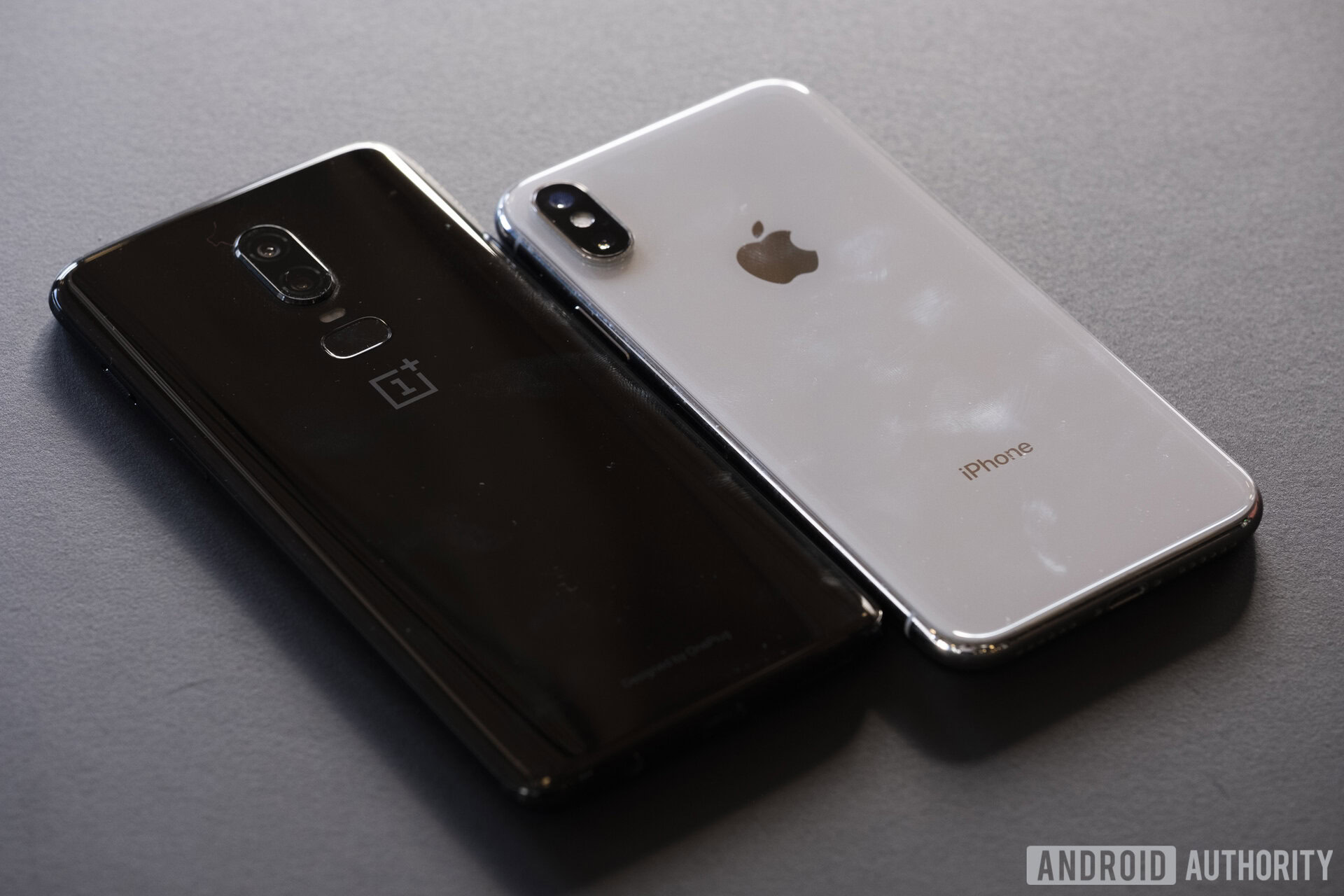
Hardware extras
The iPhone X and OnePlus 6 are attractive, powerful devices and surprisingly comparable, when you look past ecosystem differences. The phones significantly diverge with their extra features.
We already talked about wireless charging and quick charging, but there are plenty of other standout features.
iPhone X advantage: waterproofing
The iPhone X has an IP67 certification for dust and water resistance, allowing it to withstand submergence in up to one meter of water for 30 minutes. The OnePlus 6 is merely splash-proof, and has no official certification.
iPhone X advantage: Face unlock
The OnePlus 6 and iPhone X both offer face unlocking, but use very different underlying technologies.
The OnePlus 6 uses the front facing camera and performs a basic scan, which is fast and accurately unlocks every time. It’s also a lot less secure.
The iPhone X employs a special camera that projects infrared dots to perform a 3D scan of your face. This is a lot harder to fool, though it’s a few milliseconds slower and seems to fail to recognize the user more often than the OnePlus 6. The price of security, I suppose.
OnePlus 6 advantage: Fingerprint scanner
The OnePlus 6 employs a fast, accurate fingerprint scanner on the phone’s rear. The iPhone X ditches fingerprint tech in favor of face unlocking. Both methods are fairly secure, though arguably fingerprint sensors are more reliable.
OnePlus 6 advantage: Headphone jack
The iPhone X is one of many phones move away from wired headphones, pushing forward wireless tech. Its lightning to headphone jack dongle is hardly the most elegant solution.
The OnePlus 6 doesn’t need adapters, giving audiophiles their beloved headphone jack with no sacrifice required.
Winner: Tie
- Neither phone offers a “kitchen sink” level of features, with compromises on both sides.
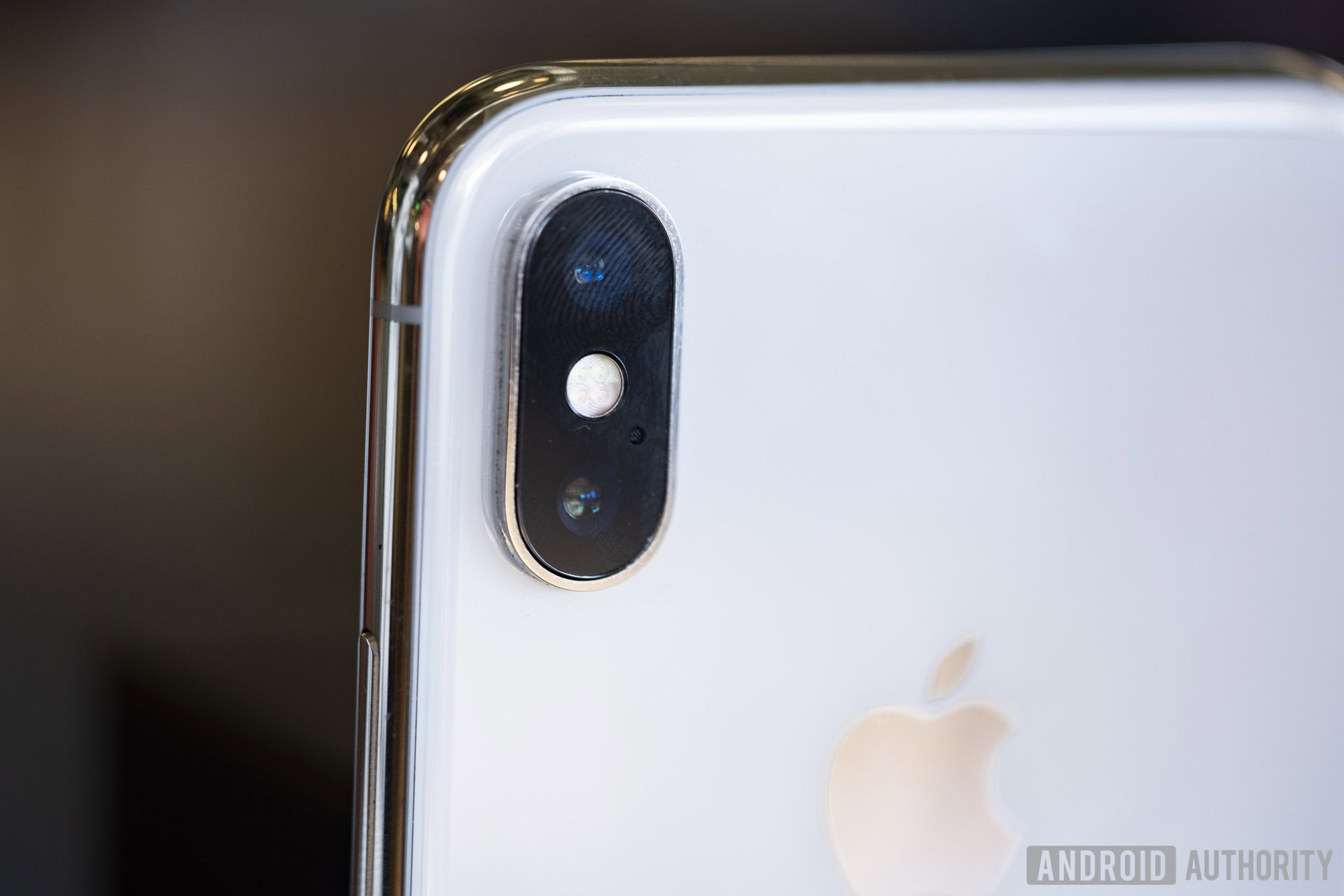
The OnePlus 6 has a dual-camera configuration with a 16MP and a 20MP camera, both with an f/1.7 aperture. The configuration is similar to the OnePlus 5T, though it offers 19 percent larger pixels to help with low-light performance. The OnePlus 6 also adds optical image stabilization.
The iPhone X packs a dual-camera configuration with a 12MP, f/1.8 wide-angle main camera and a 12MP telephoto lens with a f/2.4 aperture. Like the OnePlus 6, you also get optical image stabilization.
Deciding which camera is better depends on what you’re looking for.
OnePlus 6 advantage: Daylight images
Comparing photos in broad daylight is always harder, as phones don’t have to work as hard to compensate for harsher photo conditions. When the sun is out, the battle becomes more about sensors, definition, and glass. The differences are in the details.
In the above image comparison, we can see the iPhone X photo has its usual warmer color temperature. It is a little more on the orange side, but that doesn’t necessarily make it worse. It actually makes sense, as the sun is very strong in this setting. The warmer setting is able to better capture that harsh sunlight experience. What we don’t like is the haze over the trees, which shows the iPhone X struggled to balance exposure and contrast in direct sunlight.
The OnePlus 6 produced a crisper image, capturing more detail and balancing contrast better. The latter becomes more apparent when you look under trees. The OnePlus 6 is ever so slightly better at getting details in the shade. There’s also better contrast in the dead weeds in the foreground. Those brown hues stand out more against the green grass in the OnePlus 6 photo.
Both photos are great, but it looks like the OnePlus 6 does slightly better.
Tie: Lowlight images
Fans of vibrant colors and deeper blacks will naturally gravitate towards the photos the iPhone X produces. Apple’s image has more striking colors and deeper contrasts. The phone also grasps more details in the paint’s texture. Look closer and you will find much of that is thanks to over-processing.
The OnePlus 6 is better at producing an accurate image, though its duller colors and a softer appearance make it less striking. It couldn’t grab all the texture details of the wall and the paint, it was better at capturing a more exact white balance, softer contrast (which is normal in low-light), and more natural colors.
iPhone X advantage: Optical Zoom
The iPhone X is significantly better if zoom is important to you. A telephoto lens means you get optical zoom. This feature provides significantly better picture than the OnePlus 6’s digital zoom.
iPhone X advantage: Portrait Mode
In our OnePlus 6 review we called out the phone’s Portrait mode for providing fake looking bokeh effects. If you’re a fan of DSLR-like blur you’re going to prefer the iPhone X.
The iPhone X has a very natural blur, though sometimes it messes up fine details like hair and blurs them out. In addition to the Bokeh effects, the iPhone X also offers portrait lighting, letting you choose from different fake studio lighting options.
Everything else
Both phones offer slow motion video support and plenty of software features for adding special effects and other extras. Apple probably has more, though whether that’s important will come down to how you use the camera.
We’re not really going to talk a lot about the front cameras. Both take great selfies and have the ability to add bokeh effects. Neither is significantly better.
Winner: Tie
- The OnePlus 6 does a better job at daylight, everyday images.
- Both phones offer different low-light experiences, down to preference.
- iPhone X has better zoom and arguably better camera software features.
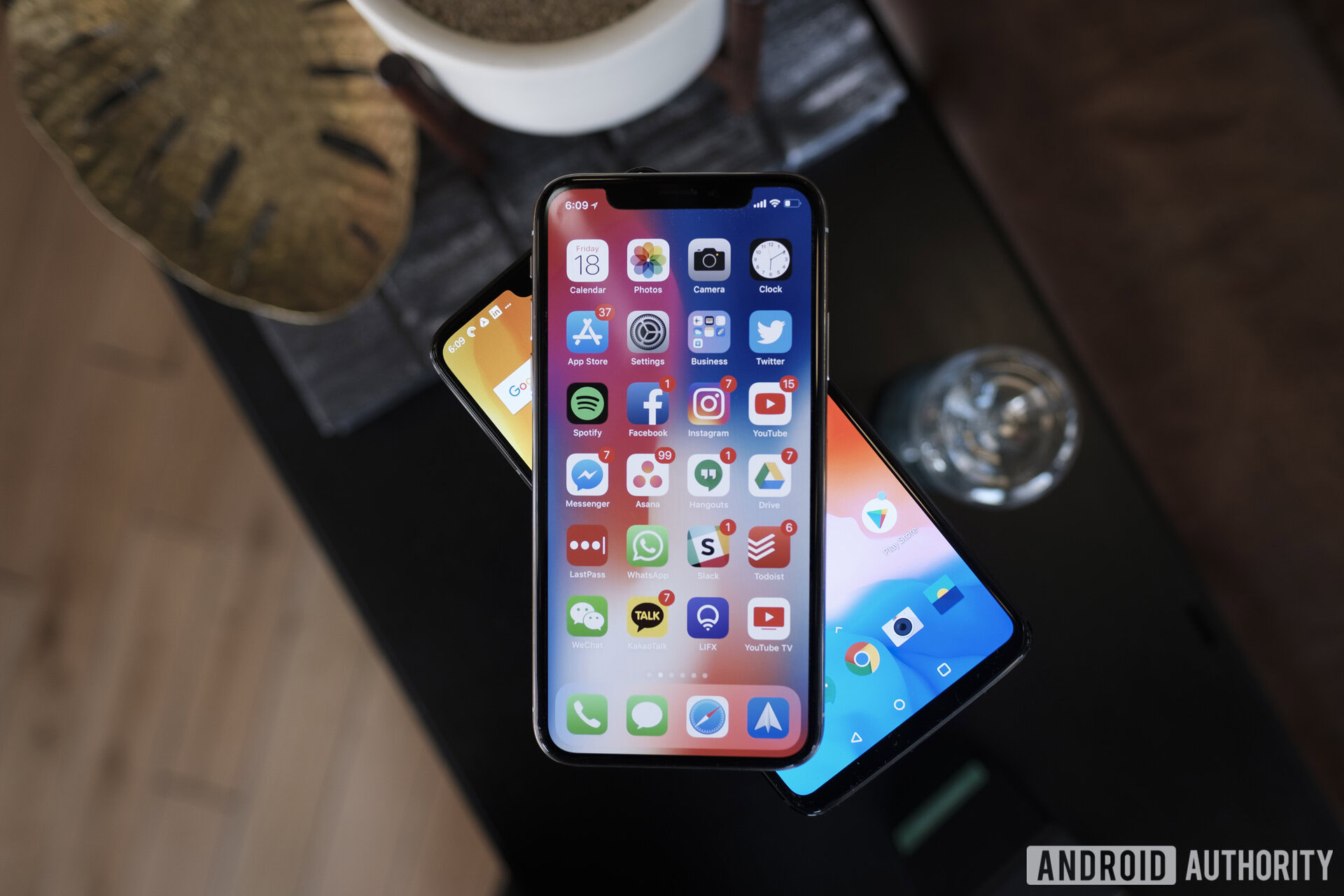
Price and availability
The Apple tax is very real with the iPhone X. The cheapest model is $999 for 64GB of storage. You’ll be paying a whopping $1,149 for 256GB.
The base 64GB model of the OnePlus 6 costs $529, while the most expensive model is $629 for 256GB of storage. When it comes to price, the OnePlus 6 absolutely wins.
Apple has an advantage for Sprint, UScellular, or Verizon customers, as it works with all U.S. carriers. The OnePlus 6 only supports T-Mobile, AT&T, and compatible MVNOs.
Winner: OnePlus 6
- OnePlus 6 offers a similar experience for hundreds less.
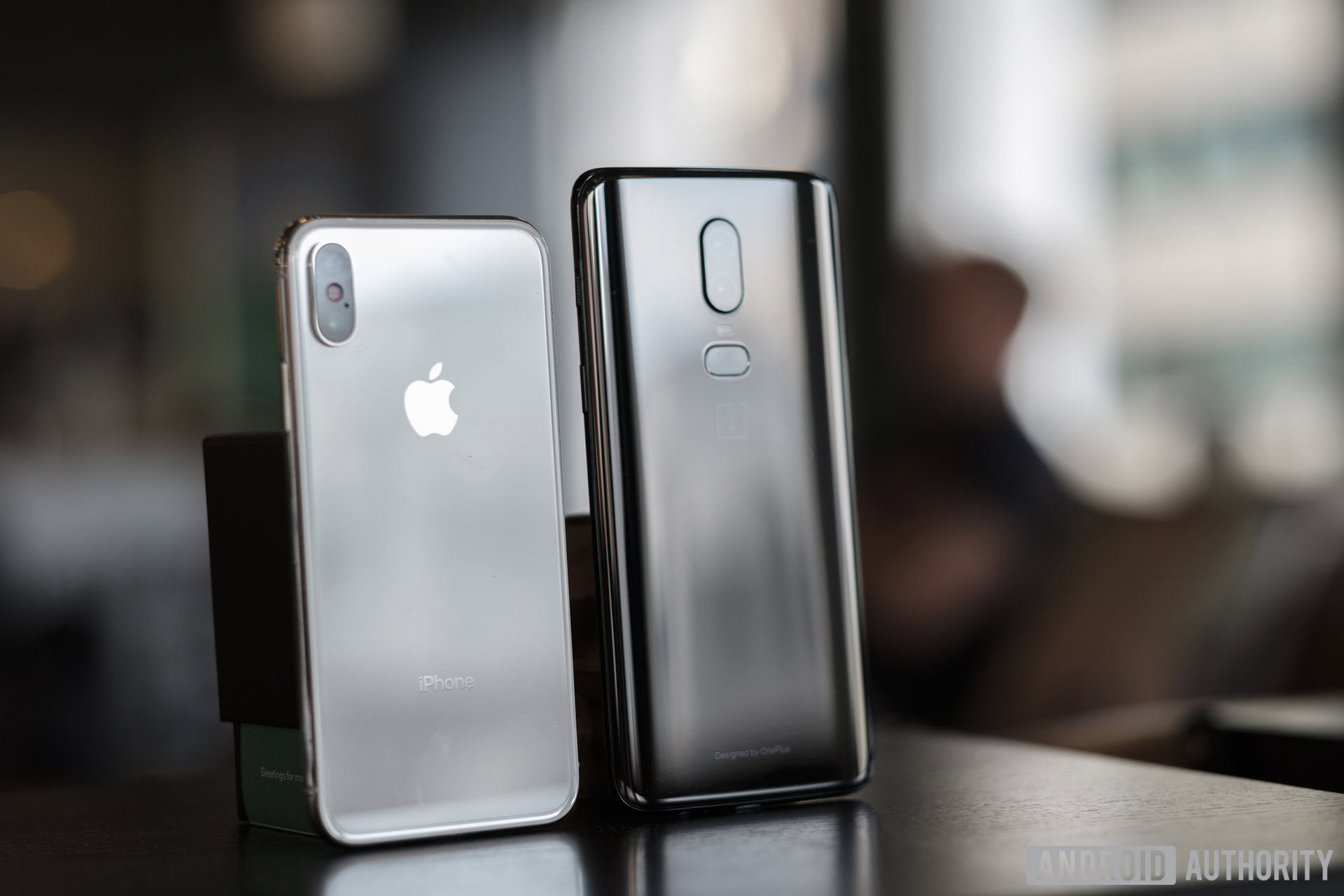
And the winner is: The OnePlus 6
Though it’s a really close battle. Ultimately both phones are comparable in nearly every area but price, where the OnePlus 6 totally crushes the iPhone X.
Making an actual buying decision isn’t as simple as this though. As you can see, the OnePlus 6 holds its own against the iPhone X in a surprising number of ways. In fact, look and feel was the only area where I felt Apple clearly came out on top and even that’s subjective.
OnePlus 6 gives you a hell of a phone for a surprisingly low price. That makes it a better choice for many.
Therein lies the rub. We are looking at Apples and Oranges OnePluses. Which software is better is a very subjective matter, as is design. Performance is pretty even, and aspects like the camera come down to what you care more about.
So what’s a consumer to do?
Reasons to buy the iPhone X:
- You prefer a smaller, nimbler handset.
- You don’t care about the headphone jack.
- You want a phone that’s waterproof.
- You’re a fan of iOS, or at least don’t mind Apple’s walled garden.
- You don’t care about fingerprint scanners, and are sold on face unlock.
Reasons to buy the OnePlus 6:
- You prefer Android or don’t mind giving it a try.
- You love the headphone jack.
- You can’t live without the fingerprint scanner.
- You prefer bigger phones.
- You want a very similar level of polish and features to expensive flagships, for a lot less.
So that’s it for our OnePlus 6 vs Apple iPhone X comparison. Which phone do you prefer and why? Sound off in the comments.